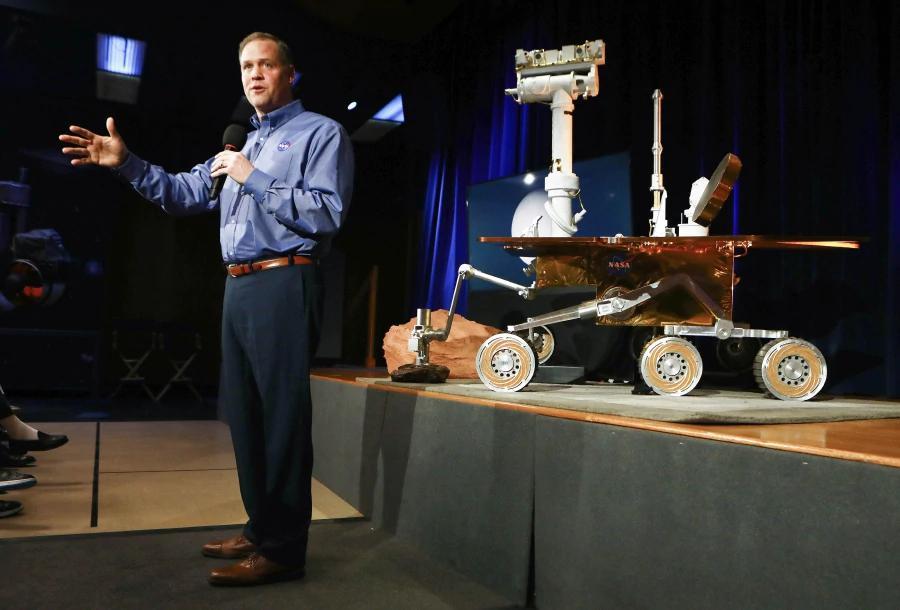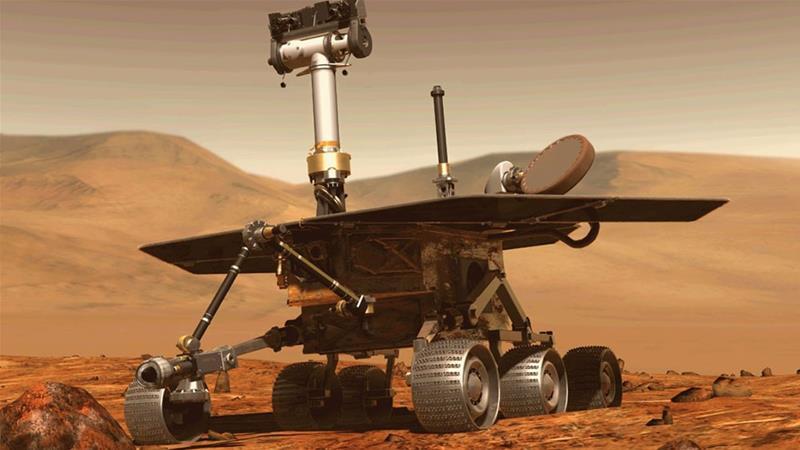WASHINGTON, Feb. 13 (CGTN) -- During 14 years of intrepid exploration across Mars it advanced human knowledge by confirming that water once flowed on the red planet-but NASA's Opportunity rover has analyzed its last soil sample.
The robot has been missing since the U.S. space agency lost contact during a dust storm in June last year and was declared officially dead Wednesday, ending one of the most fruitful missions in the history of space exploration.
Unable to recharge its batteries, Opportunity left hundreds of messages from Earth unanswered over the months, and NASA said it made its last attempt at contact Tuesday evening.
"I declare the Opportunity mission as complete," Thomas Zurbuchen, associate administrator of NASA's Science Mission Directorate told a news conference at mission headquarters in Pasadena, California.
The program has had an extraordinary record of success: 28.1 miles (45.2 kilometers) traversed, more than the Soviet Union's Lunokhod 2 moon rover during the 1970s and more than the rover that US astronauts took to the moon on the Apollo 17 mission in 1972.
Opportunity sent back 217,594 images from Mars, all of which were made available on the internet.
Human-like perspective
"For the public the big change was that Mars became a dynamic place, and it was a place that you could explore every day," Emily Lakdawalla, an expert on space exploration and senior editor at The Planetary Society.
"The fact that this rover was so mobile, it seemed like an animate creature," she said. "Plus it has this perspective on the Martian surface that's very human-like."
"It really felt like an avatar for humanity traveling across the surface," she added.
Opportunity landed on an immense plain, and spent half its life there, traversing flat expanses and once getting stuck in a sand dune for several weeks. It was there, using geological instruments, that it confirmed that liquid water was once present on Mars.
During the second part of its life on Mars, Opportunity climbed to the edge of the crater Endeavour, taking spectacular panoramic images-and discovering veins of gypsum, additional proof that water once flowed among the Martian rocks.
Opportunity's twin, Spirit, landed three weeks ahead of it, and was active until it expired in 2010. The two far exceeded the goals of their creators: In theory, their missions were supposed to last 90 days.
Today, only a single rover is still active on Mars, Curiosity, which arrived in 2012. It is powered not by the sun, but by a small nuclear reactor.
In 2021, the recently named Rosalind Franklin robot, part of the European-Russian ExoMars mission, is slated to land on a different part of the planet, raising the population of active rovers to two.







